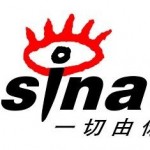I do not frequently use this space to “follow-up” on recent topics about which I have written. I also realize that I just followed up with a story regarding the extremely outsized Facebook (FB) earnings beat on July 25th and the legal/ethical quagmire into which the Dell, Inc. (DELL) buyout saga has descended. However, those two developments were of such magnitude that they deserve to be updated. In this article, I briefly review my articles about AIG and the U.S. Federal Reserve Board because (in my opinion) news that has unfolded since those stories is of sufficient significance to warrant this additional attention.
THE MAKING OF A CASH FLOW MACHINE
You will recall that in the AIG story, I hypothesized what could happen to AIG stock if the company’s board approved a dividend and/or a share buyback program. On Thursday (August 1st) AIG reported earnings totaling $2.7 billion, or $1.84/share – an amazing 38.3% increase over one year earlier! During the next morning’s trade activity, the stock was up over 3% on the news.
Since AIG still ranks among the U.S. public at the very bottom of the Harris Poll’s annual survey on “corporate reputation”[1], it bears frequent repeating that, as of this past December, AIG has paid the United States in full for that mega-loan by moving through a multi-year discipline of strategic downsizing – resulting in the sale of billions in AIG assets. The total provided to AIG by the U.S. was $182.3 billion, while AIG returned $205 billion in payment – netting the U.S. a tidy profit of $22.7 billion.[2] It still amazes me that at one point the U.S. owned 92% of AIG, and as recently as the 2012 AIG financial report, was still the “majority owner”. That makes this most recent report even more astounding.
So what did the AIG board do besides “knock the ball out of the ballpark” on earnings? It announced the reinstatement of a shareholder dividend, something it could not do until it had fully paid off the bailout loan. Admittedly, the ten cents dividend payable on September 26th is modest – but every dividend has to start somewhere! Much more impressively, the board announced a $1 billion share buyback program. With a Free Cash Flow TTM[3] currently at $18.24 billion(see graph), there is not only no danger of these shareholder-friendly distributions stretching the company’s financial ability – one can reasonably assume that AIG will proceed to grow its dividend and/or buyback program in future quarters.
What was the market’s reaction to the news announced by AIG? Between market close on Wednesday, July 31, and the closing price on Friday, August 2, the stock zoomed upward by 6.2%!
Depending upon your perspective on relative value, the YTD AIG price chart (below) could either be considered exciting or cause for a bit of caution. (See graph below). You can see that, since January 1st, AIG has barreled upward by over 35%, outpacing the S&P 500 (red) by more than 15%!
Counter balancing that (to at least some degree) is its discount to book value of 28% (BV is $67.41/share). While admitting upfront that this is in no way an “apples to apples” comparison, Berkshire Hathaway (BRK-A) [Note: these metrics relate to the “A” shares] has been heavily into the insurance industry since it’s beginning, and receives a large share of its operating profit from insurance. So I offer these two valuation measures for what they might be worth:
1) The Price/Book Value metric on a share of AIG is about one-half that of BRK-A.[4]
2) The Price/Sales metric for AIG is 37% less than for BRK-A.[5]
If I wanted to buy a piece of AIG, I would be inclined to buy on a pullback or consider a bull put position with a strike of $45 or less ($45.50 was where the price was before the earnings report).
Breaking down the sources of the quarter’s earnings, I found these statistics interesting:
1) 42.8% From the life and retirement unit;
2) 40.6% From the property casualty unit;
3) 13.9% From investments in Private Equity and Hedge Funds
4) 2.7% From the mortgage insurance unit.
I was personally surprised by the almost 14% from private equity and hedge funds. But that reflects my prejudice about big financial companies (that were bailed out) engaging in proprietary trading. Once I thought it through, I realized that what AIG is doing is not that unusual.
Finally, my eye was drawn toward a very sizable accrued tax benefit that will provide AIG management with some financial flexibility moving forward: “Net Deferred Tax Assets” of $16.7 billion.[6] And AIG reports it is still working on the sale of its plane-leasing unit to a Chinese group for $4.23 billion. That sale does not impact present or future earnings because that business has already been backed out of the figures reported for Q2!
INVESTOR TAKEAWAY: Even if you are not interested in being a shareholder of AIG or trading its stock or options, the transformation of this “Bail Out Icon” from “too big to fail” to a (relatively) slim and trim cash flow machine is remarkable and well worth noting. For some of you, its relative value and the commitment of AIG management to enhance shareholder value through a dividend and a huge share buyback could be a compelling draw. We have already seen, on multiple occasions, the very beneficial impact of share buybacks and dividends on the price of a company’s stock.
FIX ECONOMY, DAMMIT!
As you know, the U.S. Federal Reserve (FED) had it monthly meeting on July 30-31. In my earlier article, I alerted you regarding what to watch for in statement issued following the meeting. “Will we be Fed or Fed up?”
The level of “Fed Angst” felt by the market since May of this year (precipitated by Ben Bernanke’s injection into our daily investment lexicon of the term “taper”) cannot be overstated. Take a look at this chart of the CBOE 10 Year Treasury Note Rate Index (TNX). We moved from a 1.639% rate on May 1st to 2.715% on July 5th… then to as low as 2.488% on July 22nd.[7] Particularly noteworthy is a look at how “itchy” traders’ “trigger finger” got on the morning of the Non-Farm Payroll release on Friday (August 2) – when, fearing a “good” unemployment number (eg. new jobs over 195,000) the rate was pushed up to the edge of a breakout above 2.73%!
However, once traders applied rational thought and analysis to the reported 162,000 new jobs and discerned that the decline in the unemployment rate to 7.4% (lowest rate since 2008) was enabled by another sizeable “exit” from active job hunting, traders’ anxiety eased – thereby leading to a rate decline to 2.602%by the close. Other notable metrics in the report included the following: CHART I (below)
1) Hourly earnings decreased by 0.1%;
2) That goes hand-in-hand with a seemingly growing trend toward new job creation occurring predominantly in lower-wage categories;
3) Another trend (that some associate with corporations trying to limit healthcare costs imposed by the “Affordable Care Act”) that was continued in this report is an increase in the share of part-time hires. [See Chart I – from U.S. Bureau of Labor Statistics (USBLS)]
4) The “Discouraged Workers” metric increased (See Chart II—USBSL)
CHART II
5) Here is a metric that shows how much longer the current unemployment duration is vis-à-vis prior recessions! (USBSL). [8]
Let’s review that statement released by the FED following the mid-week meeting. We had alerted you to the fact that it would be a stretch if the FED had changed their June characterization of economic growth from “moderate” to anything higher. If the only GDP number you heard from this past week’s report was the 1.7% growth ascribed to the second quarter, you would surely have thought that I had “missed” something important – since the “expected” number had been just 1%. However, with all government numbers, you need to keep any “headline” number in perspective be hunting (very quickly) for any/all “prior period adjustments”! In this quarter’s GDP report, that was the crucial metric – since the Q1 number was cut from 1.8% to 1.1%! Therefore, the first half GDP came in at 1.5%, so far below the FED’s own projection for FY 2013 GDP that the U.S. will not reach the FED’s projection unless the second half experiences GDP growth between 3.1 and 3.8%.[9]
In light of all the above, the FED actually changed its growth adjective from “moderate” to “modest”![10] Also of note, the FED added language to the effect that a risk exists for “persistent below-target inflation”. Because that risk was precisely the risk that prompted Fed Governor Bullard to dissent from the June FOMC statement[11], Bullard did not dissent from this month’s decision.
Those are the “essentials” from the FED’s statement. It turns out that our article was very much “on target”. That being said, I learned something of significant import this past week about the U.S. economy since the depths of the “financial crisis”. I will try to be brief in sharing what I learned.
Politicians, commentators, investors, and the “average citizen” have grown accustomed to verbalize our economy in terms of phrases such us “as we strive for recovery”, “waiting for recovery”, “what is Congress doing to speed our recovery”, etc. In light of that, consider this graph of “Real Gross Domestic Product”, in billions of dollars:
Do you see anything surprising? It is right there in front of you!
What happened in Q2 of 2011?
Yes, our economy exceeded the 2007 (prior) high level of GDP!
This means that, technically, we “recovered” in that quarter! Ever since then, we have, technically, been “expanding”!
Settle down now, folks!! It’s not healthy for your face to turn bright red as your blood pressure rises and you scream at me: “Expansion! Expansion! We don’t have any frickin’ ‘expansion’! You are full of _____ (fill in the blank).”
Yes, folks, that is exactly how I felt when I saw this graph. Throwing the “technicalities” out the window, I think most of us agree that this does not “feel” like an “expansion.”
Now look at this graph of GDP growth from quarter to quarter. Notice that, following the steep “jump upward” in Q2 of 2011 (when we technically achieved “recovery”) our growth has been tepid and very irregular. For the purpose of visual perspective, a reasonable long-term “average” for US GDP growth would fall approximately at the horizontal gridline shown on the graph’s left axis at “0.6”.
Therefore, as you can see, we have been spending a lot of time “below average”, and most recently, just above “zero”. No wonder we use the phrases we currently use to characterize our economy!! “Tepid” hardly feels like an “expansion”!
INVESTOR TAKEAWAY: I wish I could say that the markets will now turn their attention away from the FED to other, more normal and traditional “inputs” with regard to the current market “value” of stocks and bonds. Alas, as the “trigger finger” of bond traders illustrated on August 2nd, that is so unlikely to become true that I (and you) should put it out of my mind (but not out of my dreams).
In this world awash is government provided liquidity (FED, BOE, ECB, BOJ), our markets have developed an addiction to that artificial liquidity. The rational among us know that these regular money “injections” (market mainlining, so to speak) will not and cannot be sustained forever. But until the markets, at some future point in time[12], reach a more sustainable equilibrium – it behooves us to stay closely in tune with central bank policy.
DISCLOSURE: The author does not presently own AIG or BRK-A. Nothing contained in the above article is intended to be a recommendation to buy or sell anything. Always consult with your financial advisor before buying or selling any security. Finally, the FED regularly ignores the author’s advice.; but he takes comfort in the fact that, someday, it will come around to his way of thinking.
Submitted by Thomas Petty MBA CFP
[1] I presume that extremely low reputational ranking is predicated upon AIG still being the “poster child” for the financial excess that precipitated the 2007-2009 financial crisis. The U.S. Treasury “bailed it out” to the tune of over $180 billion!
[2] http://en.wikipedia.org/wiki/American_International_Group
[3] TTM means “Trailing Twelve Months”
[4] This means that, based on the Price/Book Value metric, AIG is a better relative value.
[5] Based on the Price/Sales Ratio, AIG is a better relative value.
[6] This results from as yet unapplied losses from the overwhelming red ink that enveloped AIG in 2008. Some of this “asset” expires this year, but other parts of it do not mature until anywhere between two years and 20 years from now!
[7] All those rates are on a “closing” basis!
[8] Graph created through the St. Louis Federal Reserve website.
[9] This past week, the U.S. government announced two changes in the formula used to calculate Gross Domestic Product (GDP). This is a very significant issue that I will outline in a future article!
[10] “Modest” is not quite my preferred term of “tepid”, but Bernanke probably didn’t read my email message!
[11] The monthly FED meetings are actually meetings of the Federal Open Market Committee (FOMC)
[12] Perhaps by the year that proves to be the inaugural voyage of the Starfleet starship Enterprise?
Related Posts
Also on Market Tamer…
Follow Us on Facebook

 You Don't Need Talent to Succeed: Lessons From Warren Buffett's Lifetime of Investing
You Don't Need Talent to Succeed: Lessons From Warren Buffett's Lifetime of Investing



